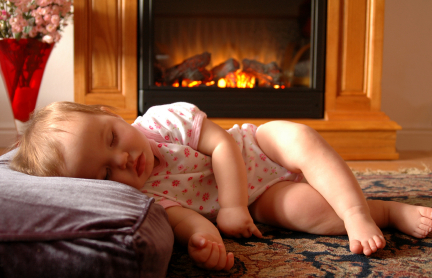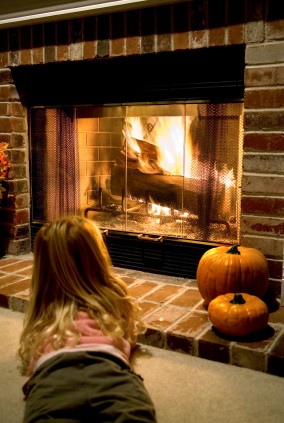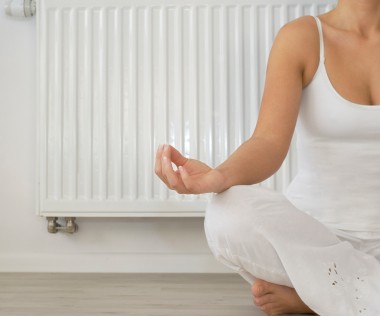If you’re in the market for a new home heating and cooling system, a heat pump is definitely an option worth considering. However, while the popularity of these systems is growing rapidly, many people still don’t understand what they’re all about. Before you go out and get yourself a new home comfort system, you should make sure you really know what you’re looking at.
As their name suggests, heat pumps move heat from one location to another. However, their name can be misleading as well. Heat pumps are able to both heat your home in the winter and keep it cool in the summer by taking heat from the air in one place and sending it to another.
For example, your heat pump will remove the heat from your indoor air in the summer and pump it outside to keep your home cool. In the winter, the process is reversed, and the heat pump gathers heat from the outdoor air and pumps it inside to keep you house warm.
Of course, it’s not hard to see how the air inside your home in the summer has heat in it. But the outdoor air in the winter is cold. So how does a heat pump heat your house with cold air? Well, the truth is that there is almost always some heat in the air, no matter how cold it seems to you and me.
In fact, the temperature would have to drop well into the negative range before there was absolutely no heat to be found in the air. And heat pumps are specially designed to find that heat and collect it.
Basically all heat pumps work on this principle. However, they can’t keep your house comfortable all on their own. Heat pumps are usually installed as part of a complete home heating and cooling system. This means they’ll be paired with an air handler that can circulate the temperature controlled air throughout the house.
There are also some heat pumps that supplement the amount of heat they’re able to pull out of the air by heating it as it passes through. These types of heat pumps are often more effective in cooler areas, but because they require more energy to actually generate heat, they’re not typically as energy efficient as models that rely on their ability to get heat only out of the air.
If you’re in the market for a new home heating and cooling system, a heat pump is definitely an option worth considering. However, while the popularity of these systems is growing rapidly, many people still don’t understand what they’re all about. Before you go out and get yourself a new home comfort system, you should make sure you really know what you’re looking at
As their name suggests, heat pumps move heat from one location to another. However, their name can be misleading as well. Heat pumps are able to both heat your home in the winter and keep it cool in the summer by taking heat from the air in one place and sending it to another.
For example, your heat pump will remove the heat from your indoor air in the summer and pump it outside to keep your home cool. In the winter, the process is reversed, and the heat pump gathers heat from the outdoor air and pumps it inside to keep you house warm.
Of course, it’s not hard to see how the air inside your home in the summer has heat in it. But the outdoor air in the winter is cold. So how does a heat pump heat your house with cold air? Well, the truth is that there is almost always some heat in the air, no matter how cold it seems to you and me.
In fact, the temperature would have to drop well into the negative range before there was absolutely no heat to be found in the air. And heat pumps are specially designed to find that heat and collect it.
Basically all heat pumps work on this princ
If you’re in the market for a new home heating and cooling system, a heat pump is definitely an option worth considering. However, while the popularity of these systems is growing rapidly, many people still don’t understand what they’re all about. Before you go out and get yourself a new home comfort system, you should make sure you really know what you’re looking at
As their name suggests, heat pumps move heat from one location to another. However, their name can be misleading as well. Heat pumps are able to both heat your home in the winter and keep it cool in the summer by taking heat from the air in one place and sending it to another.
For example, your heat pump will remove the heat from your indoor air in the summer and pump it outside to keep your home cool. In the winter, the process is reversed, and the heat pump gathers heat from the outdoor air and pumps it inside to keep you house warm.
Of course, it’s not hard to see how the air inside your home in the summer has heat in it. But the outdoor air in the winter is cold. So how does a heat pump heat your house with cold air? Well, the truth is that there is almost always some heat in the air, no matter how cold it seems to you and me.
In fact, the temperature would have to drop well into the negative range before there was absolutely no heat to be found in the air. And heat pumps are specially designed to find that heat and collect it.
Basically all heat pumps work on this principle. However, they can’t keep your house comfortable all on their own. Heat pumps are usually installed as part of a complete home heating and cooling system. This means they’ll be paired with an air handler that can circulate the temperature controlled air throughout the house.
There are also some heat pumps that supplement the amount of heat they’re able to pull out of the air by heating it as it passes through. These types of heat pumps are often more effective in cooler areas, but because they require more energy to actually generate heat, they’re not typically as energy efficient as models that rely on their ability to get heat only out of the air.
iple. However, they can’t keep your house comfortable all on their own. Heat pumps are usually installed as part of a complete home heating and cooling system. This means they’ll be paired with an air handler that can circulate the temperature controlled air throughout the house.
There are also some heat pumps that supplement the amount of heat they’re able to pull out of the air by heating it as it passes through. These types of heat pumps are often more effective in cooler areas, but because they require more energy to actually generate heat, they’re not typically as energy efficient as models that rely on their ability to get heat only out of the air.





